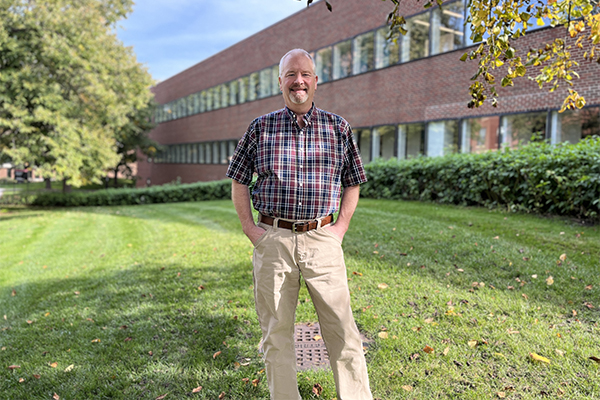John Raabe, who helped develop the intern program for ITI and has mentored students through their experiences for over 20 years, talks about its inception and why every ITI student would benefit from taking an internship
John Raabe first became involved with the Information Technology Infrastructure program (ITI) back in 1999 as a member of the advisory board, which is made up of working IT professionals, in the early days of the program. Early on, he was asked whether he'd like to teach a course. “I’d never even thought of that!” recounts Raabe. “The course they had in mind didn’t exist so I also helped develop it.”
Within a few years, students started requesting internships, and Raabe was again enlisted to develop a process for students to get connected to companies for internship experience. The first internship happened to be a position at the company where he was working at the time. He also served as that student’s faculty advisor to mentor them through the experience.
“Eventually we formalized it with certain things they needed to complete throughout the internship, such as written status updates, Zoom check-ins—which is an informal opportunity for students to talk about what’s going on at their internship, if what they’re seeing is normal, and to give them reassurance or help them through any issues—and a report and presentation at the end, which is basically the guts of the one-credit internship course [INET 4596],” says Raabe.
These days, Raabe teaches two courses, Foundations of Networking and Introduction to Security: Policy and Regulation. As he says: “I get to see students twice and a third time if they choose me as their internship faculty advisor.” While ITI doesn’t require its students to take an internship, they strongly encourage it. Below Raabe outlines the benefits and other particulars of the ITI internship.
Why should ITI students go through an internship?
One of the benefits of having one is that it can often lead to a full-time position with the same company. It gives them a leg up in that hiring process, both at the company where they intern or others, and they get some hands-on, practical experience in the field, which is really what differentiates them out in the market.
What types of things can students learn that they don’t learn in class?
They get exposure to the subject matter in the field, which can help them decide what to focus on for their career. At some of the bigger companies, they can rotate through multiple teams to get a sense of what resonates with them. For example, they may spend two weeks at the service desk and two weeks with the server people and two weeks with the network people or the security team. It gives them more information to make that decision.
Also, every company is slightly different, so students may get exposure to one set of technology tools in the classroom and a different set of tools at this particular company. So now they have exposure to multiple tools that IT departments use to do the job.
Finally, they learn what it means to be an employee, right? Improving your soft skills and team participation. And, you know, having a stand-up meeting every day. So they become more well-rounded, more experienced.
When during the two-year ITI program should students try to get their internship experience?
We recommend they start as soon as possible. We want students to have several internship opportunities; however, to have a more robust experience we ask that students complete a few of our INET courses so that they can apply what they have learned to the internship experience.
What have students said about their internship experience?
We’ve never really had negative feedback, I’m proud to say. No matter who the faculty advisor is. The students say things like, “I was able to do this at my internship because I’d heard about it in class.” That’s a direct, real-time application in the real world of what they’re just learning conceptually in the classroom. In a live environment, where changes make a difference and there’s no resetting back to square one if you make a mistake, they see and experience those things like back ups and how to restore and why and when, and all those scenarios and situations that are hard to simulate in a classroom laboratory because they don’t have consequences.
And some students talk about their personal and professional growth, and learning how to get to work every day, reporting to a manager and what that means. It’s useful to remember this is the first time that some of these young people have had to do that. Those are some of the more powerful things they talk about.
What changes have you seen?
You know, back in the day, 15 years ago, when the bubble was expanding and all of this was new, we had many more non-traditional students, career-changing professionals. Now it’s mainly the 20-somethings and half the stuff was invented before they were born. They’ve lived and grown up with this technology. So now, it’s more about “How does this work?” and “How is it actually managed?” and “How does it do what it does?” as opposed to before when it was “How do we make it?”
We’ve seen some of these changes reflected in internships, too. For example, they may intern for a company that’s doing development for a mobile app. They’re on version seven of it, where they’re tinkering with it, making small changes and adding features. Five years ago that was, “We’re in the midst of creating our first version of our first mobile app.”
What should students be thinking about when choosing an internship?
They should think about their goals for the internship, such as improving their interpersonal skills, or becoming more professional or getting experience in a workplace. Then they would think about the technical skills. “I’d like to know more about IT security investigations,” for example.
What’s the first step for a student interested in doing an internship?
Students can talk to their faculty advisor, their academic advisor, or Career and Internship Services to get started.









